There’s a fine line between creative inspiration and mockery. And as the beauty and fashion industries continue to grow (collectively worth over $600bn*), this line is becoming increasingly blurred.
Some of the world’s biggest brands have created insulting products and played victim after the backlash. Gucci and Louis Vuitton are known for modelling controversial fashion pieces in their seasonal campaigns and disrespecting an entire culture. In the same manner, high-end makeup brands such as Tarte Cosmetics are notorious for their “laughable” and non-inclusive products which falsely represent people of colour.
As a society, can we tell the difference between cultural appropriation and cultural appreciation? When Selena Gomez wore a bindi to Coachella, where does that fall on the spectrum?
The UN has previously discussed ways of combating cultural appropriation with the formation of a special committee within the World Intellectual Property Organisation (WIPO). The idea behind WIPO when it was created in 1967 was to protect intellectual property from different cultures and avoid exploitation.
Cultural appropriation is something we see across day-to-day social media, with people receiving hate comments for changing their appearance and wearing clothing from other cultures.
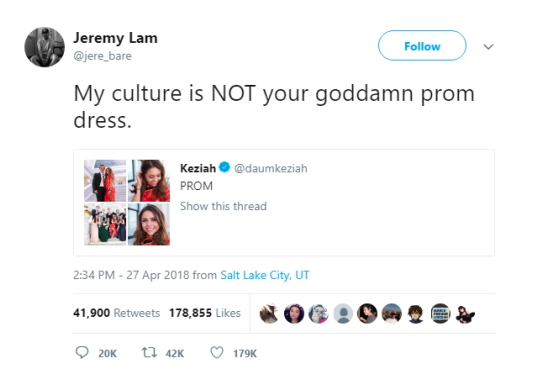
The argument surrounding whether they’re innocently expressing their personality or disrespectfully imitating a culture is, in many ways, at the forefront of today’s beauty and fashion industry.
The question is, do we appreciate cultural progress in society and give people the benefit of the doubt? Or should international brands know better, given their brand values and the extensive reach of their campaigns?
High-end fashion: Inventive vs insulting
Cultural appropriation has always been an underlying issue in the fashion industry, with many top designers flippantly turning elements of culture into everyday fashion accessories. Despite the brand or class and status of the designer – celebrities, influencers and general social media users take no prisoners when it comes to confrontation.
Kimono
Earlier this year, celebrity icon Kim Kardashian announced plans to launch her shapewear line ‘Kimono’ which was quickly met with backlash on social media.
Fans and Twitter users alike accused Kim of disrespecting and making a profit out of the traditional Japenese culture, forcing Kimono to rebrand.
In a bid to protect the culture, BBC News Japanese editor Yuko Kato responded:
Nice underwear, but as a Japanese woman who loves to wear our traditional dress,👘 kimono, I find the naming of your products baffling (since it has no resemblance to kimono), if not outright culturally offensive, especially if it’s merely a word play on your name. Pls reconsider
— Yuko Kato (@yukokato1701) June 26, 2019
The tweet sparked further backlash across the platform, making people question how such a world-famous brand could “steal” from the Japenese culture without considering the beauty and elegance of the country’s tradition.
The mayor of Kyoto, Daisaku Kadokawa, even politely issued a statement to Kim asking her not to trademark “kimono”. He said:
“Kimono is a traditional ethnic dress fostered in our rich nature and history with our predecessors’ tireless endeavors and studies, and it is a culture that has been cherished and passed down with care. We think that the names for ‘kimono’ are the asset shared with all humanity who love kimono and its culture, therefore they should not be monopolized.”
Though Kim sincerely apologised on social media before relaunching as ‘SKIMS Solutionwear’, it still feels as though the rebrand was a result of somebody authoritative making a public stance against the design, rather than respect for the culture as a whole.
Skims’s VP of Marketing, Julia Collier-Ungano said:
“She’s truly touched every single piece, wear-tested everything. I’ve truly never seen anything like it.”
But trying and testing your brand isn’t enough. New products are only good products if they’re made with pure intentions and the customer at heart – and are suited to every customer regardless of their culture.
For somebody with such an extensive following, this particular case feels careless and insensitive.
Gucci
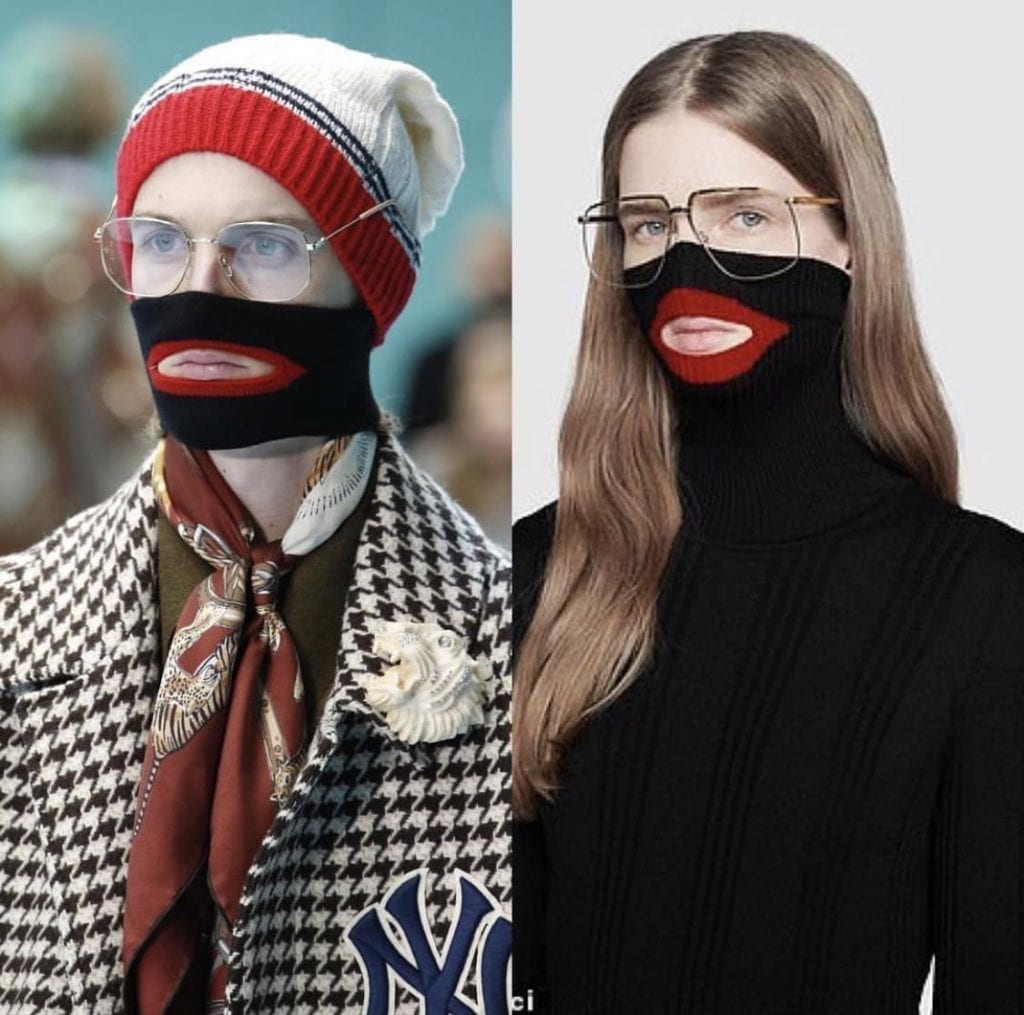
Gucci was under fire in February this year after people suggested its $900 black balaclava sweater resembled blackface. The supposed fashion item featured a cut-out at the mouth and red lips and ironically became available to buy during Black History Month.
The site’s product description previously read: “Inspired by vintage ski masks, multi-coloured knitted balaclavas walked the runway, adding a mysterious feel to this collection. This knit top combines the accessory with the ready-to-wear collection.” But after severe backlash across social media, Gucci released a public apology for the offensive design.
It seems the statement was met with even more concerns, with people pointing out the incident never would’ve happened if they “hired more black people and cultivated an environment where people on all levels of the company feel comfortable to speak up.”
The design completely goes against their brand values, which according to Gucci’s President and CEO Marco Bizzarri, are “the empowerment of innovation and risk-taking, a sense of responsibility and respect, an appreciation for diversity and inclusion and excellence in execution.”
Speaking about revenue growth, Bizzarri also said:
“The fact that we are seeing such growth across all categories and regions indicates that we have been able to establish a unique and compelling brand positioning and narrative that is engaging a wide cross-section of luxury customers across various nationalities and demographics.”
But from what we can see, neither Bizzarri or the rest of the Gucci team considered nationalities, cultures or the history of racist segregation. And after apologising online, Gucci was accused of further cultural insensitivity after modelling their $790 “Indy Full Turban” at Milan Fashion Week.
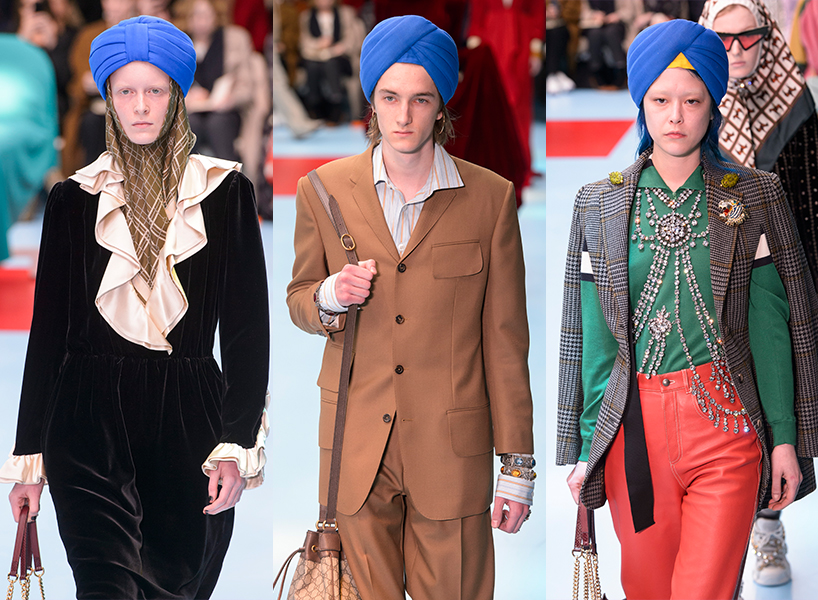
While the offensive sweater may have been “strategic marketing,” releasing another design (from the same collection) completely goes against their brand values and mocks the history and faith of two separate cultures.
The translation to mainstream media
Cultural appropriation in the luxury fashion market has heavily impacted the way both influencers and social media users judge creativity. Mainstream media is no longer a place for self-expression in fear that the most innocent people will be accused of cultural appropriation through acts of blackfishing and blackface.
Blackfishing, a recently coined term to describe when white women manipulate their features to appear biracial, has sparked underlying issues beneath racism and cultural appropriation on popular social media platforms Instagram and Twitter. Influencers with as many as 300k followers, such as Swedish model Emma Hallberg, have been accused of darkening their skin and curling their hair to appear to be a different race.
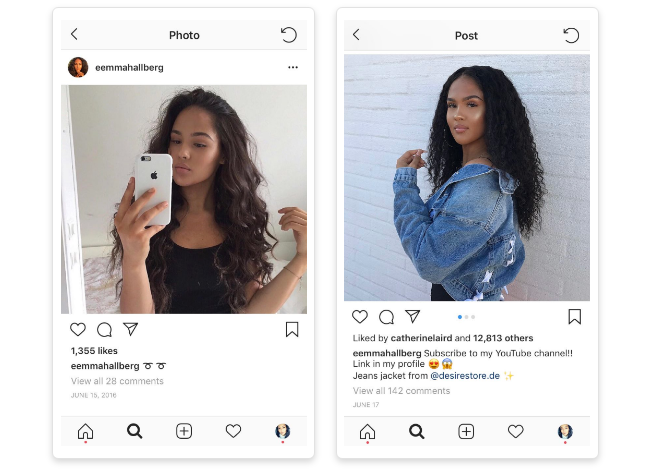
In this particular case, Emma Hallberg received a major backlash when old photos rose to the surface showing her lighter skin and straighter, less textured hair. After saying she tans easily and has naturally curly hair, and never intended to pose as a different race, her followers still felt deceived and accused her of racism.
Emma claimed, “I do not see myself as anything else than white.” But despite her response, social media users slammed her as “racially ambiguous” and said she was “pretending to be black to get followers and endorsements.”
The same can be said for Instagrammer Jaiden Gumbayan accused of blackfishing by her social media followers.
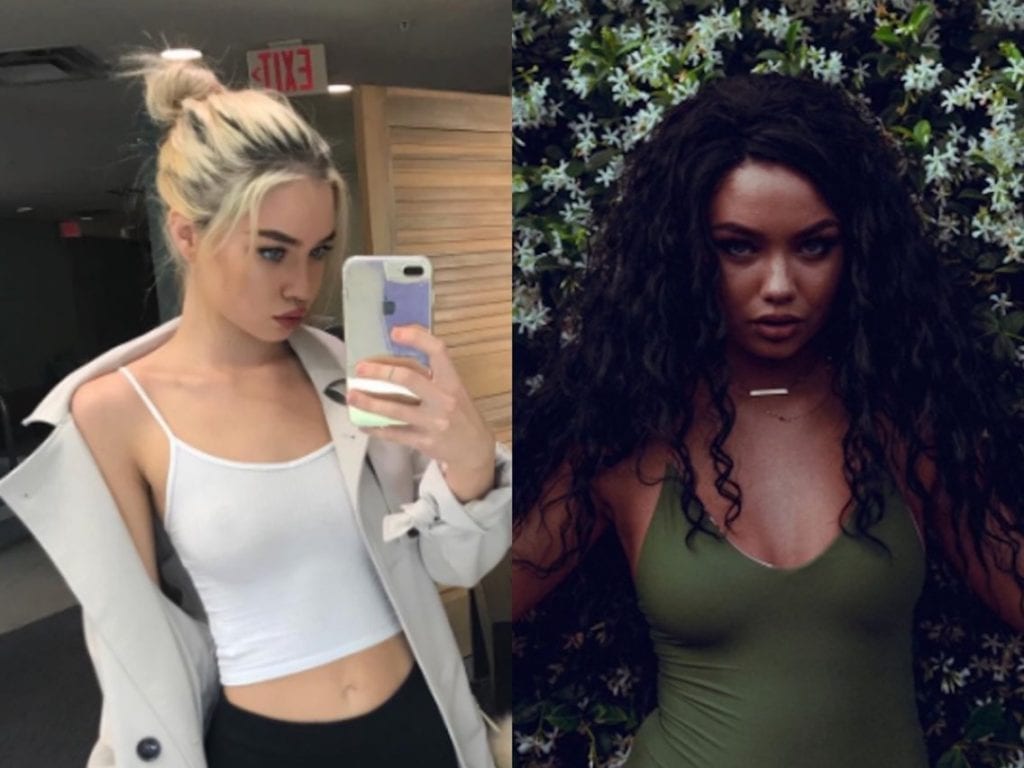
She said: “It could be looked at as the biggest form of flattery to some black women or people of colour, and to others it’s mimicking and taking their culture without knowing the history behind it.”
Businesses both large and small have also been affected by cultural appropriation, with competitor brands claiming to use cultural products in order to attract more customers. This is especially true of the afro-Caribbean hair community, which according to Stephanie Nolan – owner of celebrity-renowned XOXO Virgin Hair company – is “deceptive and borderline predatory.”
She said: “I have a strong disdain for Asian owned and operated hair extension brands that pander under the guise that they’re Black-owned and operated, by using AAVE (African American Vernacular English) slang terms and Black-presenting on social media (using Black models and influencers). It’s as if they’re wearing a costume to attract the Black dollar. They have infiltrated the US market to sell poor quality hair extensions to unsuspecting Black consumers.”
While some people are unaware of the brands they’re buying, others can’t believe the shameful non-inclusive products hitting today’s market in what could only be described as “white privilege”.
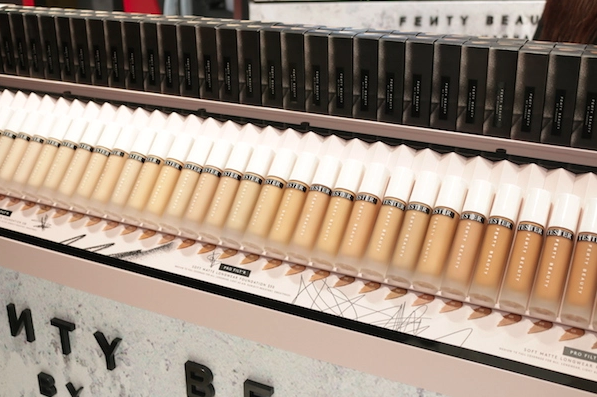
Some of the world’s biggest brands and most-followed influencers have released makeup products which only cater to people with relatively pale skin, suggesting a huge racial distinction and adding to the never-ending cycle of cultural appropriation.
These cases have rivalled claims that certain brands are the definition of “white capitalism serving white supremacy”, despite their widespread audience and former popularity.
A beautiful disaster
Makeup trends come and go, but we don’t forget the die-hard products we used to use day in day out. Glamour just revealed 11 of this week’s biggest beauty launches and I can’t help but think they look gimmicky and I’d rather go back to the old days. I don’t recognise a third of the brands – but I remember the brands that stood the test of time.
None of the brands I’m referring to have created insulting products or built brand awareness around insulting campaigns. They’ve never caused a public uproar or gone against their brand values. They’ve created products in line with their audience and kept their customers at the heart of every launch, and I would never doubt their morals.
Like Zendaya said back in 2015:
“You have to be very careful. Some things are really sacred and important to other cultures, so you have to be aware, politically, about those things before you just adopt them. In order to appreciate something, you have to know about it and understand.”
If only billion-dollar beauty and fashion brands adopted the same way of thinking, it wouldn’t take millions of people expressing their upset across social media to really make a difference. Though when it came to US beauty brand Tarte Cosmetics, the flood of backlash ignited a brand new launch of all-inclusive products to cater to every skin colour – rightfully so.
Tarte Cosmetics
Following the initial foundation launch of 12 pale shades and only 3 darker ones, Jackie Aina, a Nigerian-American beauty YouTuber told her now 3.23m subscribers:
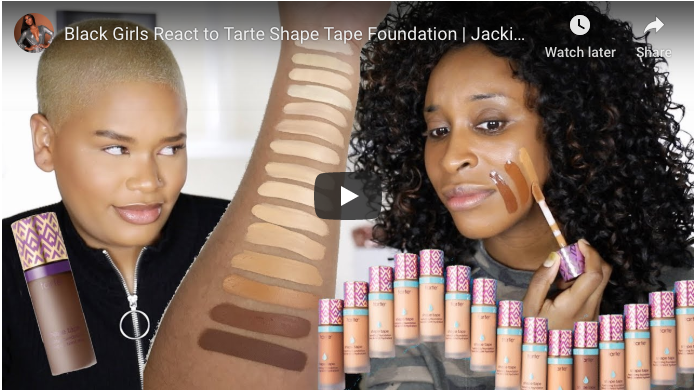
“I don’t appreciate the blatant erasure of a whole spectrum of people. It doesn’t even look like they tried. […] Tarte has to be the most whitewashed brand out there, from their marketing to their Instagram. This brand just embodies the exact opposite of what I stand for.”
Note that she said “from their marketing to their Instagram”. Your customers will always be able to tell if you have an ulterior motive. If your brand preaches about inclusivity and launches a product that only caters for one skin colour, they’ll notice. And you’ll have to pay the price.
Jackie Aina wasn’t the only one who slammed the shade range – thousands of people took to social media to slate the brand after being segregated based on their race or culture.
British beauty YouTuber Patricia Bright told her 2.38m subscribers:
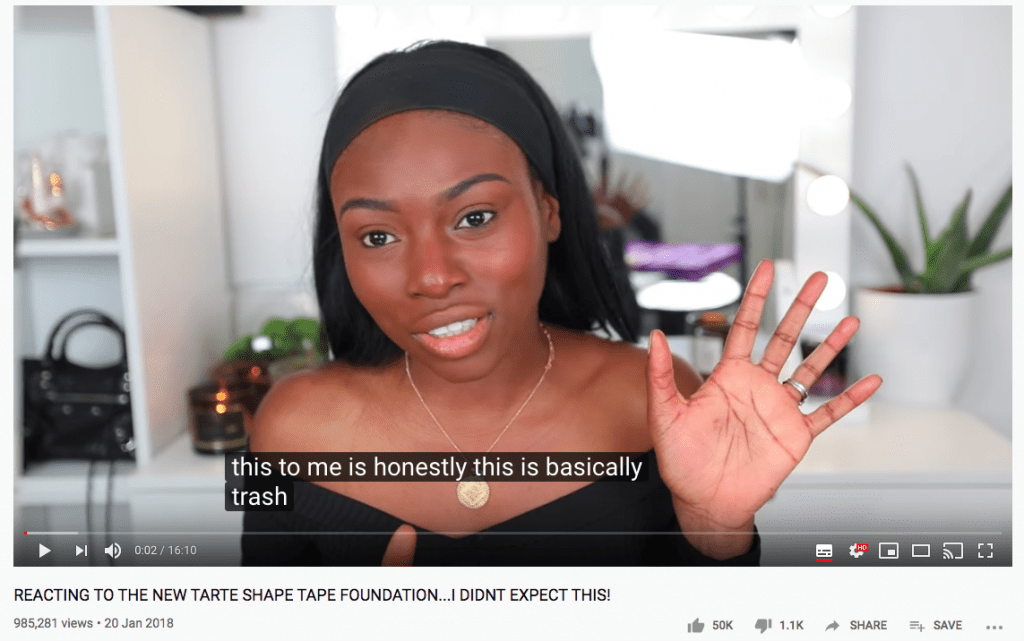
“I don’t know what my Indian friends or Sri Lankan friends are gonna’ do because I don’t know where you fit on this scale… People are launching foundations of all colours and all shades and you have the audacity to launch 15 shades.”
Funnily enough, Tarte’s brand is built around “offering eco-chic, cruelty-free cosmetics and hypoallergenic, vegan skincare.” They even state that they travel the world to find the best, most efficient ingredients for their products, which makes it seem like they think it’s acceptable to lack in shades.
In response to the backlash, Tarte wrote a statement on their Instagram story saying: “We wanted to get the product out as fast as possible, and we made the decision to move forward before all the shades were ready to go. We know there is no excuse & we take full responsibility for launching this way. We lost sight of what’s really important in this industry.”
The same rule applies for every industry, regardless of product, vision or goal – put your customers first and you will always be in the winning team.
Beauty Blender
In another controversial case, Beauty Blender released 32 foundation shades with only 5-7 shades suitable for darker skin tones. The other 35+ shades were a mix of beige, olive and honey tones which was blamed on the “wacky filter” giving a false representation.
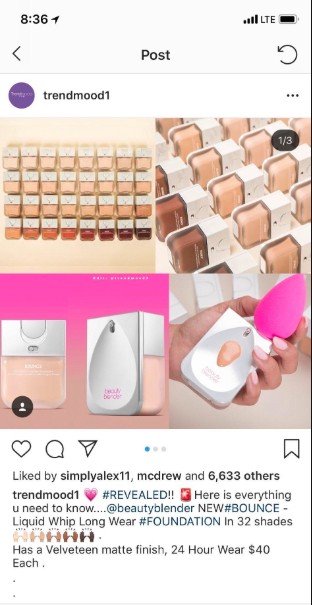
Appalled by the shade range, American beauty YouTuber and artist Jeffree Star published a video to his now 16.6m subscribers titled “SHADE RANGE WHO?? THE TRUTH ABOUT THE BEAUTY BLENDER FOUNDATION”. The video came after Jeffree commented on the original Instagram photo saying “So barely 5 shades for people of color… Can’t relate.”
In the video which received 335k likes, Jeffree said: “Your eye immediately goes to the whole top and middle row looking identical, it looks like a whole lot of shades of beige honey.” Rightly so, it does, despite Beauty Blender’s Founder spanning “a 20-year journey as one of the most sought-after Hollywood makeup artists in the industry.”
Beauty blogger MakeupShayla also discussed the controversial shade range in a YouTube video, saying:
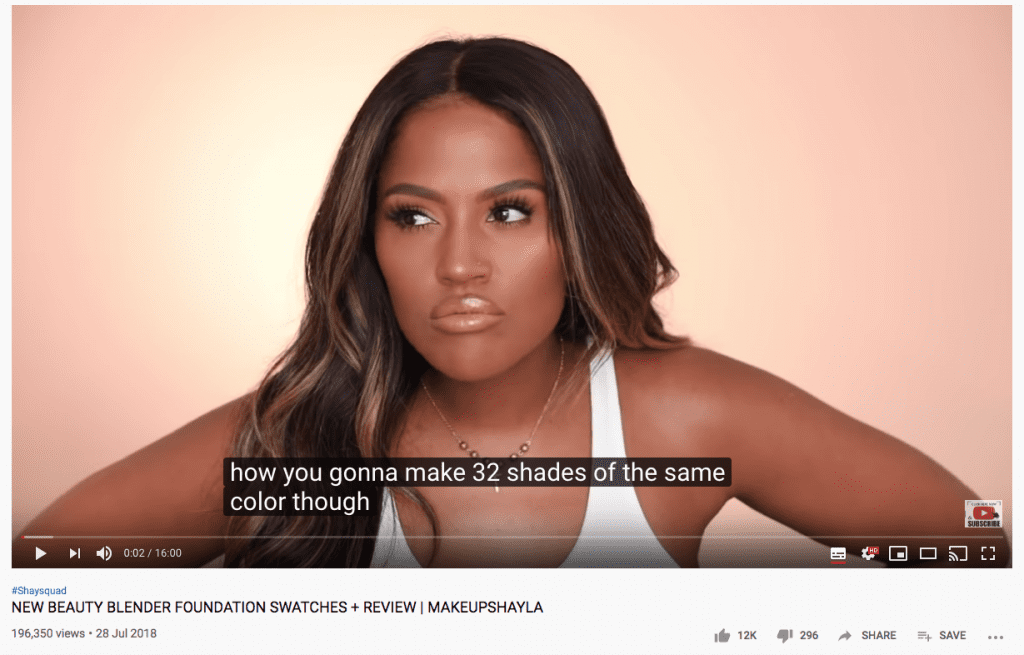
“I’m not surprised, this is what most brands do – 80% of brands do this. Did all of these brands speaking about inclusivity not teach you anything? It’s really just disappointing.”
These reactions spread like wildfire, with hundreds of people questioning why the brand can make 100 different colours of beauty blenders but can’t make more than 5 shades for darker-skinned people. What we must recognise though is how such brands react after receiving backlash, and whether or not they take the convenient measures to make things right.
Despite coming across seemingly racist, Beauty Blender turned to Twitter to mock copies of their beauty sponge which “single-handedly changed the beauty game.” The tweet encouraged further backlash about the brand as a whole, with people saying:
The whole @beautyblender management team needs to be replaced. First the foundation shade range fiasco, now trying to throw shade at the dupe brands and make people feel bad that they can't afford your overpriced sponges. Girl BYE
— Amber☠️ (@amber_alert1432) March 23, 2019
Cultural appropriation in the beauty industry doesn’t just start and stop at an insulting product or shade range. The entire brand, creators and owners are judged as insensitive and often racist, perpetuating a ton of accusations every time they do something that could potentially be offensive.
After all, if one of the biggest international brands can completely disregard people of colour, what does that mean for the rest of us?
To forgive or forget
Cultural appropriation is rife in the beauty and fashion industry. Cultural styles and traditions are taken advantage of by some of the world’s biggest brands, despite their claims to be diverse and inclusive. Even in day-to-day life, much smaller content creators are accused of changing their features and darkening their skin to attract attention and make it as successful influencers.
Some would argue that the above cases are a result of oversensitivity and that there only seems to be a problem when the posts go viral. Others think the line between creative inspiration and simply being insulting is clear and that both brands and individuals should know the difference.
Global lifestyle correspondent Jenni Avins told Quartz:
“In the 21st century, cultural appropriation – like globalization – isn’t just inevitable; it’s potentially positive. We have to stop guarding cultures and subcultures in efforts to preserve them. It’s naïve, paternalistic, and counterproductive. Plus, it’s just not how culture or creativity work. The exchange of ideas, styles, and traditions is one of the tenets and joys of a modern, multicultural society.”
Well said.
* (Statistics found on Statista: Fashion – worldwide and Revenue of beauty and personal care U.S. 2019)



